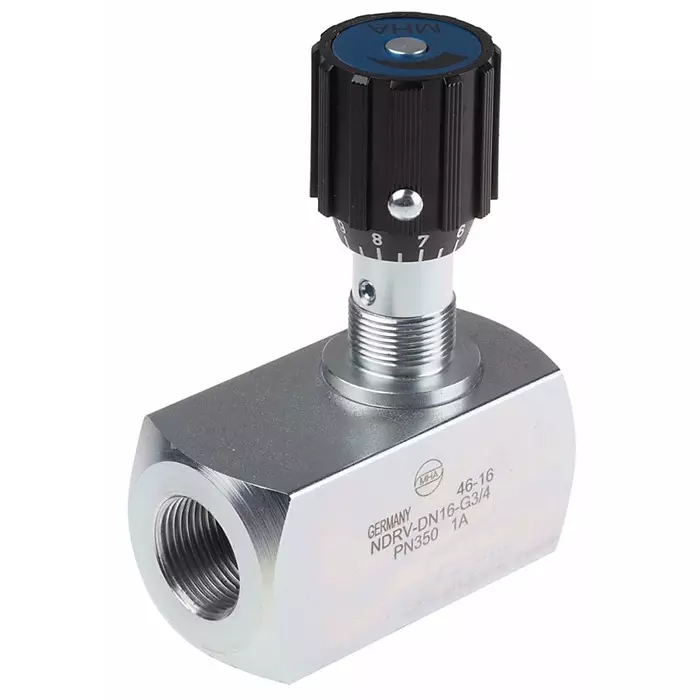Contact : +91-79045 61980 | Email: hydrofitengineers@gmail.com

HYDRAULIC FLOW CONTROL VALVE


A hydraulic flow control valve with check valve is an important component of hydraulic systems that are used in a wide range of applications, such as industrial machinery, construction equipment, and agricultural machinery. The valve is designed to regulate the flow of hydraulic fluid in a system while also ensuring that the fluid only flows in one direction, preventing backflow and potential damage to the system.
The basic design of a flow-control valve with check valve consists of a valve body, a control element, and a check valve. The valve body contains the flow passage and the control element, while the check valve is typically integrated into the valve body or installed separately in the system.
The control element of the valve can be of various types, including a spool, a poppet, or a needle. The spool type is the most common and consists of a cylindrical shaft that slides inside the valve body, controlling the flow of hydraulic fluid through the valve. The poppet type consists of a disc or ball that blocks or unblocks the flow passage, while the needle type uses a tapered shaft to regulate the flow of fluid.
The check valve in a flow-control valve with check valve is typically a ball or disc valve that prevents backflow of hydraulic fluid in the system. The check valve can be spring-loaded or gravity-operated, and it opens and closes automatically depending on the direction of flow.
When hydraulic fluid enters the valve body, it first encounters the check valve, which opens to allow the fluid to pass through if it is flowing in the correct direction. The fluid then encounters the control element, which regulates the flow of fluid through the valve based on its position. The control element can be manually operated or automated using an actuator, such as a solenoid or a motor.
Advantages of Hydraulic-Flow Control Valve
One of the key advantages of a flow control valve with check valve is that it enables precise control of fluid flow in a hydraulic system. By adjusting the position of the control element, the rate of flow can be increased or decreased as needed. This makes it possible to control the speed of hydraulic cylinders, motors, and other hydraulic components, which is important in many applications.
Another advantage of a flow-control valve with check valve in hydraulics is that it helps to prevent damage to the system by ensuring that fluid only flows in one direction. Backflow of fluid can cause damage to hydraulic components, such as pumps and cylinders, by subjecting them to excessive pressure or causing cavitation. The check valve in the flow control valve prevents this from happening, ensuring that the system operates reliably and efficiently.
Hydraulic flow-control valves with check valves are available in a range of sizes range from ¼” BSP to 1-1/2” BSP Female Inline th
Types of Hydraulic Flow Control Valves
Pressure-Compensated Flow Control Valves
Pressure-compensated flow control valves are designed to maintain a constant flow rate despite changes in system pressure. These valves are ideal for systems that require a constant flow rate, such as those used in construction, mining, and agricultural equipment. They are commonly used in combination with hydraulic motors and cylinders.
Non-Compensated Flow Control Valves
Non-compensated flow control valves are not designed to maintain a constant flow rate, but instead, control the rate of flow by restricting the flow through a narrow orifice. These valves are typically used in low-pressure applications and can be used with hydraulic pumps and actuators
Applications of Hydraulic Flow Control Valves
Flow control valves are used in a wide range of applications, including:
Construction Equipment
Flow control valves are used in construction equipment such as excavators, backhoes, bulldozers, and loaders. These valves control the flow of hydraulic fluid to the hydraulic cylinders that move the arms, buckets, and other attachments.
Mining Equipment
Mining equipment such as dump trucks, loaders, and excavators use flow control valves to control the flow of hydraulic fluid to the hydraulic cylinders that operate the equipment.
Agricultural Equipment
Agricultural equipment such as tractors, harvesters, and sprayers use hydraulic flow control valves to control the flow of hydraulic fluid to the hydraulic cylinders that operate the equipment.
Material Handling Equipment
Material handling equipment such as forklifts, cranes, and hoists use flow control valves to control the flow of hydraulic fluid to the hydraulic cylinders that operate the lifting and moving functions of the equipment.
Aerospace Industry
The aerospace industry uses flow control valves in aircraft hydraulic systems to control the flow of hydraulic fluid to the hydraulic cylinders that operate the landing gear, flaps, and other control surfaces.
Check out the range of High Pressure flow control valves from ASTA USA
